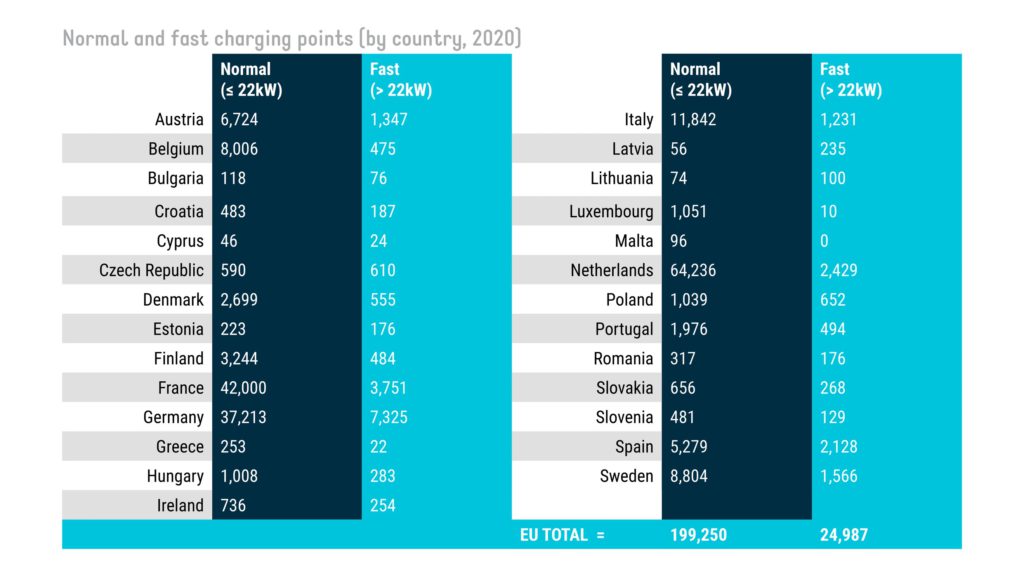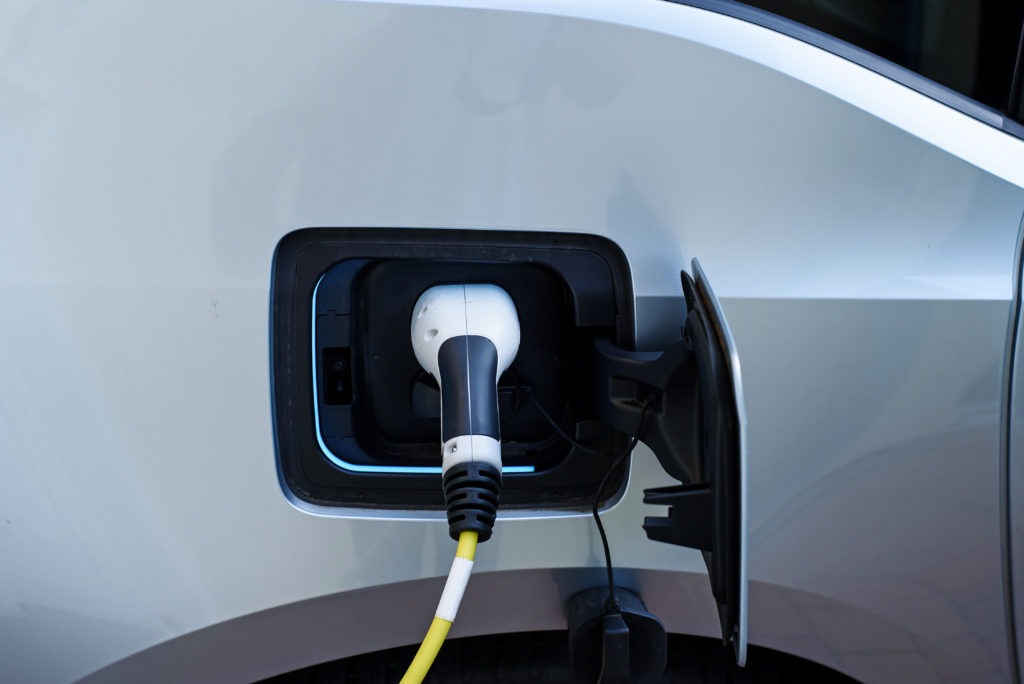Only one in nine EU EV chargers are fast
05 November 2021

The European Automobile Manufacturers’ Association (ACEA) has alerted EU policymakers to a two-pronged electromobility problem. Firstly, a sprawling lack of charging infrastructure for electrically-chargeable vehicles (EVs). Secondly, of the chargers which do exist, very few are capable of replenishing batteries at acceptable speeds.
The association is sounding the electromobility alarm at an opportune moment. National governments and the European Parliament are preparing their positions on the Alternative Fuels Infrastructure Regulation (AFIR). Proposed by the European Commission in July, this piece of legislation is a cornerstone of Europe’s ‘Fit for 55’ package as it sets out the parameters for EV infrastructure.
One in nine
The EU is currently equipped with some 225,000 available public chargers. However, only 25,000 of these are capable of fast charging at a rate above 22kW. This means only one in nine plug-in points can match the higher speeds manufacturers are reaching for. These chargers are capable of significantly boosting a battery in less than an hour.
The remaining 89% of charging points include many of what ACEA calls ‘common-or-garden, low-capacity power sockets,’ with a capacity of 22kW or less. Consumers might be waiting the entire night to recharge at one of these points. This is a prospect many manufacturers are keen to avoid as they present battery-electric vehicles (BEVs) and plug-in hybrids (PHEVs) as feasible alternatives to internal-combustion engine (ICE) powered models.

At first, the roster of countries with the highest percentage of fast chargers is somewhat surprising. Latvia, Lithuania, and the Czech Republic can boast that at least 50% of their infrastructure is capable of an output over 22kW (80.8%, 57.5%, and 50.8% respectively). Meanwhile, France, Germany, Italy, and Spain sit at 8.2%, 16.4% 9.4%, and 28.7%. Even Denmark (17.1%), Sweden (15.1%) and Finland (13%) struggle to break the 20% barrier.
However, the leading countries have a far lower number of chargers by comparison. Furthermore, charging technology has been developing rapidly over the past few years. Countries that began installing plug-in points in the very early stages of electromobility are now left with legacy infrastructure, which, while still capable, does not live up to today’s improved plugs.
Convenient and simple charging
‘To convince more citizens to go electric, we have to remove all the hassle associated with charging,’ said ACEA director-general, Eric-Mark Huitema. ‘People need to see plenty of chargers in their daily environment, and these charging points must be quick and easy to use – without having to wait in long queues.’
‘Charging should be as convenient and simple as refuelling is today. Unfortunately, the AFIR proposal is nowhere near ambitious enough to achieve this goal. What is more, it is totally misaligned with the proposed new CO2 targets for cars,’ cautioned Mr Huitema.
So, ACEA wants the European Parliament and Council to strengthen the Commission’s AFIR proposal. It wants to ensure Europe can kit itself out with a network packed with charging and refuelling infrastructure, including ‘sufficient numbers of fast chargers in each EU member state by 2030.’
Essential electric infrastructure
This most recent warning comes barely two months after ACEA drew attention to the perilously uneven spread of infrastructure across the EU. The association found 10 countries did not even have one charging point for every 100km of key roads (including motorways, state, provincial and communal roads).
But the rate of EV adoption is increasing. In the third quarter this year, BEVs and PHEVs accounted for 9.8% and 9.1% of the EU’s new-car market respectively. For BEVs, this equated to a year-on-year increase of 57% (more than 212,000 units), while PHEVs saw growth of 43% (197,000 units).
However, this growth cannot be considered sustainable if the infrastructure to support EVs is not put into place. Consumers are likely to grow tired of full charging stations or plugs incapable of meeting their car’s fast-charging capabilities.



